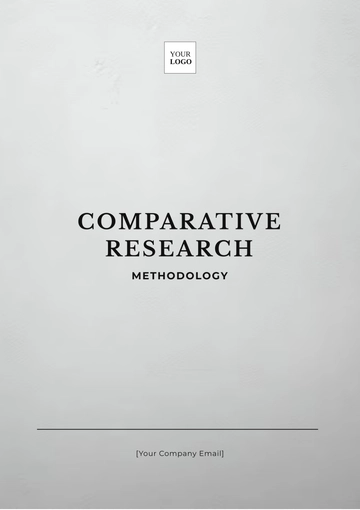Free Affiliate Marketing Descriptive Research

I. Introduction
Affiliate marketing is a performance-based marketing strategy where businesses reward affiliates for driving traffic or sales to their websites. This research aims to provide an in-depth understanding of affiliate marketing by examining its core components, benefits, challenges, and emerging trends. As an increasingly popular method for businesses to expand their reach and increase revenue, understanding these elements is crucial for both merchants and affiliates seeking to optimize their strategies and operations.
II. Components of Affiliate Marketing
Affiliate marketing involves several key components, each playing a pivotal role in the overall success of the marketing strategy:
A. Merchants
Definition: Also known as advertisers, brands, or sellers, merchants are businesses or individuals who offer products or services for sale.
Role: They create and supply the products or services and establish affiliate programs to enlist affiliates to promote their offerings.
Examples: E-commerce platforms like Amazon, digital product creators, and service providers.
B. Affiliates
Definition: Individuals or companies who promote the merchant's products or services in exchange for a commission on sales or leads generated.
Role: Affiliates use various marketing techniques to drive traffic to the merchant's website, often through content creation, social media, email marketing, and more.
Examples: Bloggers, social media influencers, and niche websites.
C. Consumers
Definition: The end users who make purchases or take actions based on the promotions provided by affiliates.
Role: They interact with affiliate links and, ideally, complete transactions that result in commissions for the affiliates and sales for the merchants.
Behavior: Consumer behavior can be influenced by factors such as the relevance of the product, the quality of the affiliate's content, and seasonal promotions.
D. Networks
Definition: Platforms that connect merchants and affiliates, providing a range of services including tracking, reporting, and payment processing.
Role: Networks facilitate the smooth operation of affiliate programs by handling the technical aspects of affiliate tracking and ensuring accurate commission payments.
Examples: CJ Affiliate, Rakuten Advertising, and Awin.
III. How Affiliate Marketing Works
The affiliate marketing process involves several steps that ensure successful collaboration between merchants, affiliates, and networks:
A. Affiliates Join a Merchant’s Affiliate Program or Network
Enrollment: Affiliates sign up for the affiliate program or network, agreeing to the terms and conditions set by the merchant or network.
Approval: Affiliates may need to be approved based on criteria such as their website's quality, content relevance, or audience reach.
B. Affiliates Receive Unique Tracking Links
Tracking Links: Affiliates are provided with unique URLs or tracking codes to promote the merchant’s products.
Function: These links track the affiliate's performance by recording clicks, leads, or sales generated through their promotions.
C. Consumers Click on Links and Make Purchases
Interaction: Consumers engage with the affiliate's promotional content, click on the tracking links, and are redirected to the merchant’s website.
Transaction: If the consumer makes a purchase or completes a desired action, the affiliate earns a commission.
D. Tracking and Commission Payment
Tracking: The affiliate network or merchant tracks the consumer's actions to ensure proper attribution of sales or leads to the respective affiliate.
Payment: Affiliates receive payments based on the commission structure defined in the affiliate program, which may include pay-per-click (PPC), pay-per-lead (PPL), or pay-per-sale (PPS) models.
IV. Benefits of Affiliate Marketing
Affiliate marketing offers numerous advantages for both merchants and affiliates:
A. Cost-Effective
Performance-Based: Merchants pay for actual sales or leads, making it a cost-efficient method of marketing.
Budget Allocation: Allows for precise budget management by linking costs directly to performance outcomes.
B. Low Risk
Risk Mitigation: Payment is contingent on performance, reducing financial risk for merchants.
Adjustable: Merchants can adjust their budgets based on the performance and ROI of their affiliate programs.
C. Extended Reach
Audience Expansion: Affiliates help merchants reach new audiences and markets that may be difficult to access through traditional marketing channels.
Diverse Channels: Affiliates use various channels, including blogs, social media, and email, to reach different segments of the market.
D. Scalable
Growth Potential: Programs can be scaled by adding more affiliates, expanding promotional efforts, or increasing commissions.
Flexibility: Merchants can adjust their affiliate program's size and scope based on performance and strategic goals.
V. Challenges in Affiliate Marketing
Affiliate marketing also presents several challenges that need to be addressed for optimal performance:
A. Fraud
Types of Fraud: This includes click fraud, false leads, and fake traffic, which can inflate costs and reduce ROI.
Prevention: Implementing fraud detection tools and monitoring affiliate activity can help mitigate these risks.
B. Competition
Market Saturation: High competition among affiliates can make it challenging to stand out, achieve high rankings in search results or attract traffic.
Differentiation: Affiliates must continually innovate and refine their strategies to maintain a competitive edge.
C. Complex Tracking
Technical Issues: Accurate tracking of affiliate performance can be complex, requiring sophisticated technology and integration.
Attribution Challenges: Ensuring that sales or leads are correctly attributed to the appropriate affiliate can be difficult, especially with multiple touchpoints.
D. Compliance
Regulations: Affiliates and merchants must comply with legal regulations, such as data protection laws and advertising standards.
Guidelines: Adhering to industry guidelines and ethical practices is essential to maintaining credibility and avoiding legal issues.
VI. Tools and Platforms
Several tools and platforms are essential for managing and optimizing affiliate marketing campaigns:
Tool/Platform | Description |
|---|---|
Google Analytics | Provides in-depth analytics on website traffic, user behavior, and affiliate conversions, enabling data-driven decision-making. |
ShareASale | An affiliate marketing network offering tracking, reporting, and payment solutions for merchants and affiliates, with a broad network of partners. |
ClickBank | A digital product marketplace that offers a variety of promotional tools and a user-friendly platform for managing affiliate campaigns. |
AffiliateWP | A comprehensive affiliate management plugin for WordPress websites, providing features such as affiliate tracking, reporting, and commission management. |
VII. Future Trends in Affiliate Marketing
Several emerging trends are shaping the future of affiliate marketing:
A. AI and Automation
Personalization: AI tools enable more precise targeting and personalized content, enhancing user engagement and conversion rates.
Efficiency: Automation streamlines processes such as tracking, reporting, and campaign management, increasing efficiency and reducing manual effort.
B. Mobile and Voice Search
Mobile Optimization: With the growing use of mobile devices, optimizing affiliate marketing strategies for mobile platforms is crucial.
Voice Search: Adapting to voice search technology by integrating relevant keywords and optimizing content for voice queries can drive additional traffic.
C. Influencer Marketing
Collaborations: Partnering with influencers can increase brand visibility and credibility, reaching a highly engaged audience.
Impact: Influencers can create authentic content that resonates with their followers, leading to higher conversion rates and brand loyalty.
D. Blockchain Technology
Transparency: Blockchain can enhance transparency in affiliate marketing by providing a tamper-proof record of transactions and reducing fraud.
Smart Contracts: Utilizing blockchain-based smart contracts can automate and secure commission payments, ensuring timely and accurate transactions.
VIII. Conclusion
Affiliate marketing presents significant opportunities for both merchants and affiliates to grow their businesses and achieve their marketing goals. Despite its competitive nature and various challenges, ongoing advancements in technology and strategy are enhancing the effectiveness and efficiency of affiliate marketing. By staying informed about market trends, leveraging the right tools, and addressing potential challenges, businesses can maximize the benefits of their affiliate marketing efforts and drive sustainable success.
IX. References
Jones, T. (2020). Affiliate Marketing Strategies. New York: Random House.
Smith, A., & Kumar, R. (2019). "The Evolution of Affiliate Marketing." Journal of Digital Marketing, 12(3), 45–58.
Brown, S. (2021). "Using AI in Affiliate Marketing," International Journal of Marketing, 15(2), 67–80.
- 100% Customizable, free editor
- Access 1 Million+ Templates, photo’s & graphics
- Download or share as a template
- Click and replace photos, graphics, text, backgrounds
- Resize, crop, AI write & more
- Access advanced editor
The Affiliate Marketing Descriptive Research Template offered by Template.net is a powerful, customizable tool designed to enhance your marketing research efforts. This fully downloadable and printable template is easily editable in our AI Editor Tool, allowing you to tailor every detail to your specific needs. Streamline your research process with this professional, user-friendly template today.





























